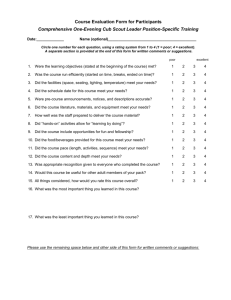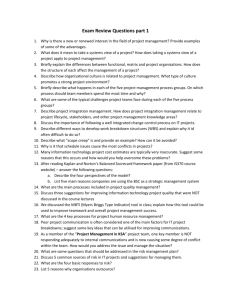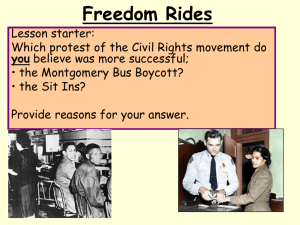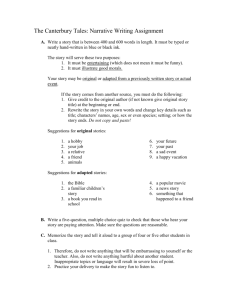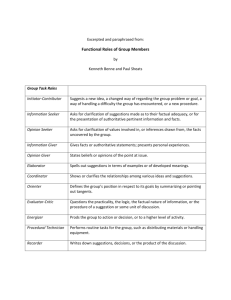Integrated Bus Suggestions
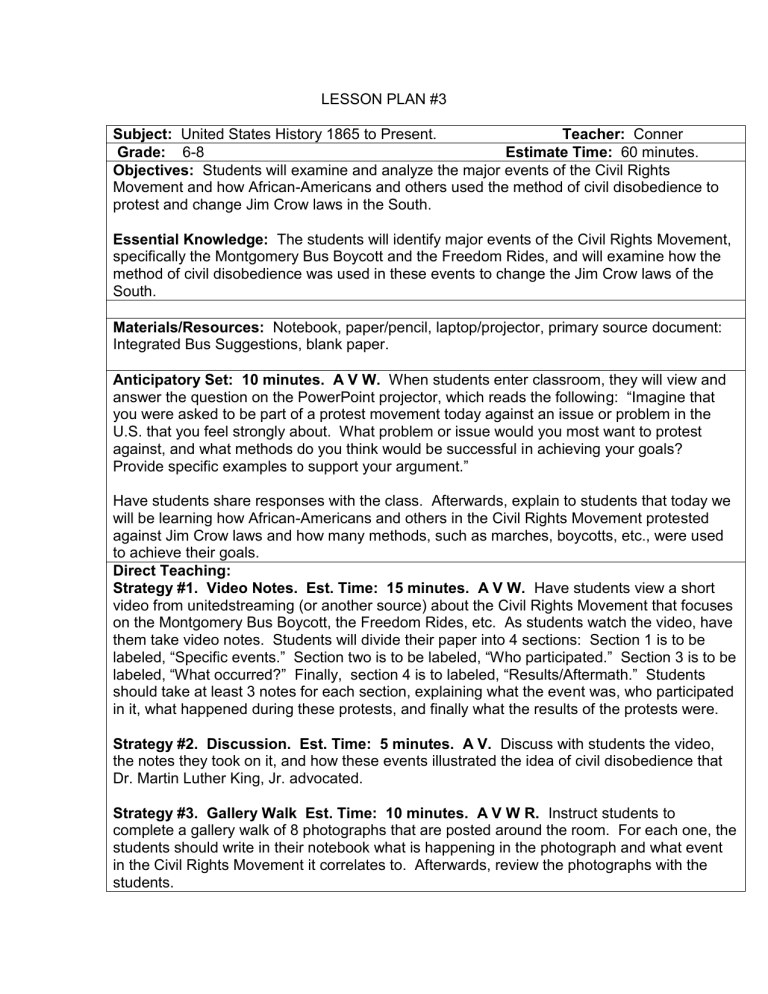
LESSON PLAN #3
Subject: United States History 1865 to Present.
Teacher: Conner
Grade: 6-8 Estimate Time: 60 minutes.
Objectives: Students will examine and analyze the major events of the Civil Rights
Movement and how African-Americans and others used the method of civil disobedience to protest and change Jim Crow laws in the South.
Essential Knowledge: The students will identify major events of the Civil Rights Movement, specifically the Montgomery Bus Boycott and the Freedom Rides, and will examine how the method of civil disobedience was used in these events to change the Jim Crow laws of the
South.
Materials/Resources: Notebook, paper/pencil, laptop/projector, primary source document:
Integrated Bus Suggestions, blank paper.
Anticipatory Set: 10 minutes. A V W. When students enter classroom, they will view and answer the question on the PowerPoint projector, which reads the followin g: “Imagine that you were asked to be part of a protest movement today against an issue or problem in the
U.S. that you feel strongly about. What problem or issue would you most want to protest against, and what methods do you think would be successful in achieving your goals?
Provide specific examples to support your argument.”
Have students share responses with the class. Afterwards, explain to students that today we will be learning how African-Americans and others in the Civil Rights Movement protested against Jim Crow laws and how many methods, such as marches, boycotts, etc., were used to achieve their goals.
Direct Teaching:
Strategy #1. Video Notes. Est. Time: 15 minutes. A V W. Have students view a short video from unitedstreaming (or another source) about the Civil Rights Movement that focuses on the Montgomery Bus Boycott, the Freedom Rides, etc. As students watch the video, have them take video notes. Students will divide their paper into 4 sections: Section 1 is to be labele d, “Specific events.” Section two is to be labeled, “Who participated.” Section 3 is to be labeled, “What occurred?” Finally, section 4 is to labeled, “Results/Aftermath.” Students should take at least 3 notes for each section, explaining what the event was, who participated in it, what happened during these protests, and finally what the results of the protests were.
Strategy #2. Discussion. Est. Time: 5 minutes. A V. Discuss with students the video, the notes they took on it, and how these events illustrated the idea of civil disobedience that
Dr. Martin Luther King, Jr. advocated.
Strategy #3. Gallery Walk Est. Time: 10 minutes. A V W R. Instruct students to complete a gallery walk of 8 photographs that are posted around the room. For each one, the students should write in their notebook what is happening in the photograph and what event in the Civil Rights Movement it correlates to. Afterwards, review the photographs with the students.
Strategy #4. Freedom Rides Suggestions. Est. Time: 20 minutes. A V W R. Distribute handout,
“Integrated Bus Suggestions.” Give students a few minutes to read the handout and then briefly discuss the background of the sheet in reference to the Montogomery Bus Boycott. Then, have students create their own suggestions worksheet for the Freedom Rides. Explain that the title should be, “Freedom Rides Suggestions.” Explain that it should have 3 parts to it. First, students whould write a small paragraph explaining what the Freedom Riders are about to embark on and why it is important. The second section should be 5 general suggestions for the Freedom Riders. Explain that they should use the concepts of non-violence and should remind the riders why the rides are so important. Finally, the third section should be specific suggestions, warning riders what they might face and how they should respond if a violent act occurs.
Bloom’s Taxonomy Used:
Knowledge Comprehension Application
Analysis Synthesis Evaluation
Research Based Strategies Used:
Similarities and Differences Homework and Practice Setting Objectives and Providing Feedback
Summarizing and Note Taking Nonlinguistic Representations Generating and Testing Hypotheses
Reinforcing Effort and Providing Recognition Cooperative Learning Clues, Questions, and Advance Organizers
Guided Practice/Checking for Understanding: Gallery Walk, video notes, Freedom Rides
Suggestions.
Independent Practice: Gallery Walk and video notes.
Closure: Have students finish for homework.
Assessment Evidence: Freedom Rides suggestions.
Reflections:
Adapted from Chesterfield County Public Schools Lesson Plan Guide
